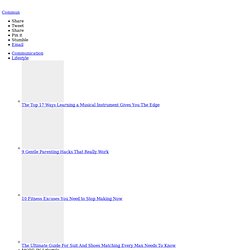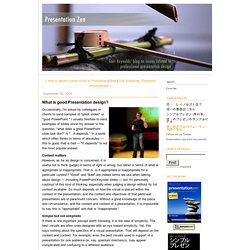

Guy Kawasaki 10-20-30 Presentation Rule. 4 Effective Presentation Techniques. Every once in a while, we are entrusted with the task of presentation.

It may be to demo a new product, to present a plan or to explain a new process that you’ve helped create. Whatever the reason and however many presentations you’ve given before, it’s something that not everyone is comfortable doing. Here are some of the presentation techniques that I’ve learnt in my experience to help you conduct an effective presentation. Setting the stage Always start with an intro. Do a brief intro on the subject of the demo. Reserve a minute to explain the structure of your presentation. Setting the stage should take you around 5 to 10 mins, depending on the number of people attending. Force a pause When you dive into the meat of your presentation, do not talk away as if there is no end. In the beginning, I know it will be tough to implement this but trust me: you will get used to it. Don’t do all the talking Make it interactive.
Ice-breakers. 10 Tips for More Effective PowerPoint Presentations. “Oh no! Not another boring PowerPoint presentation! My eyes, my eyes…!!!” The 10/20/30 Rule of PowerPoint. I suffer from something called Ménière’s disease—don’t worry, you cannot get it from reading my blog.

The symptoms of Ménière’s include hearing loss, tinnitus (a constant ringing sound), and vertigo. There are many medical theories about its cause: too much salt, caffeine, or alcohol in one’s diet, too much stress, and allergies. Thus, I’ve worked to limit control all these factors. However, I have another theory. As a venture capitalist, I have to listen to hundreds of entrepreneurs pitch their companies. To prevent an epidemic of Ménière’s in the venture capital community, I am evangelizing the 10/20/30 Rule of PowerPoint. Ten slides. So please observe the 10/20/30 Rule of PowerPoint. What is good PowerPoint design? Occasionally, I'm asked by colleagues or clients to send samples of "great slides" or "good PowerPoint.

" I usually hesitate to send examples of slides since my answer to the question, "what does a great PowerPoint slide look like? " is "...it depends. " In a world which often thinks in terms of absolutes — this is good, that is bad — "it depends" is not the most popular answer. Context mattersHowever, as far as design is concerned, it is useful not to think (judge) in terms of right or wrong, but rather in terms of what is appropriate or inappropriate. That is, is it appropriate or inappropriate for a particular context? Simple but not simplisticIf there is one important precept worth following, it is the idea of simplicity.
Simplicity is often used as a means to greater clarity. (Click for larger view of this slide) "No one can define them or draw up a system around them. Really Bad Powerpoint. I wrote this about four years ago, originally as an ebook.

I figured the idea might spread and then the problem would go away--we'd no longer see thousands of hours wasted, every single day, by boring PowerPoint presentations filled with bullets. Not only has it not gone away, it's gotten a lot worse. Last week I got a template from a conference organizer. It seems they want every single presenter to not only use bullets for their presentations, but for all of us to use the same format! Shudder. So, for posterity, and in the vain hope it might work, here we go again: Really Bad Powerpoint It doesn’t matter whether you’re trying to champion at a church or a school or a Fortune 100 company, you’re probably going to use PowerPoint. Powerpoint was developed by engineers as a tool to help them communicate with the marketing department—and vice versa. Powerpoint could be the most powerful tool on your computer.
Communication is the transfer of emotion. Our brains have two sides.